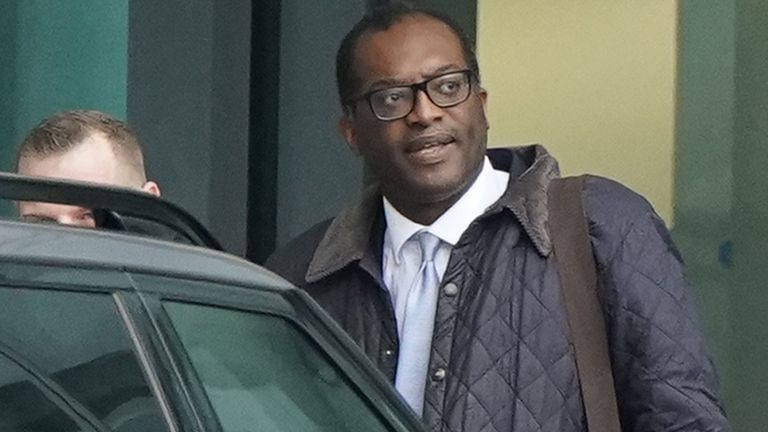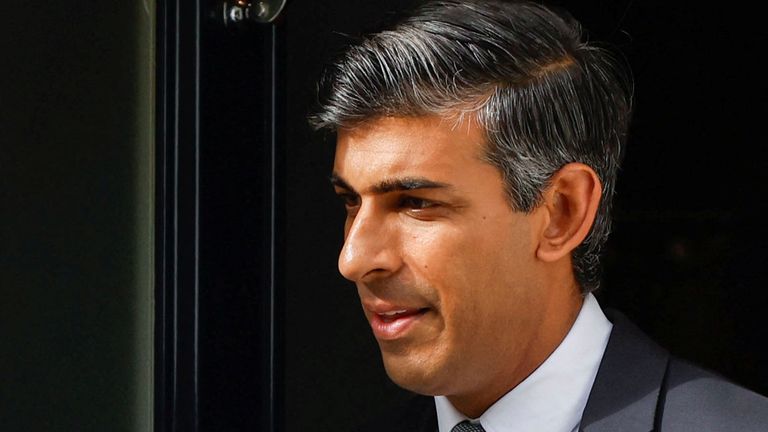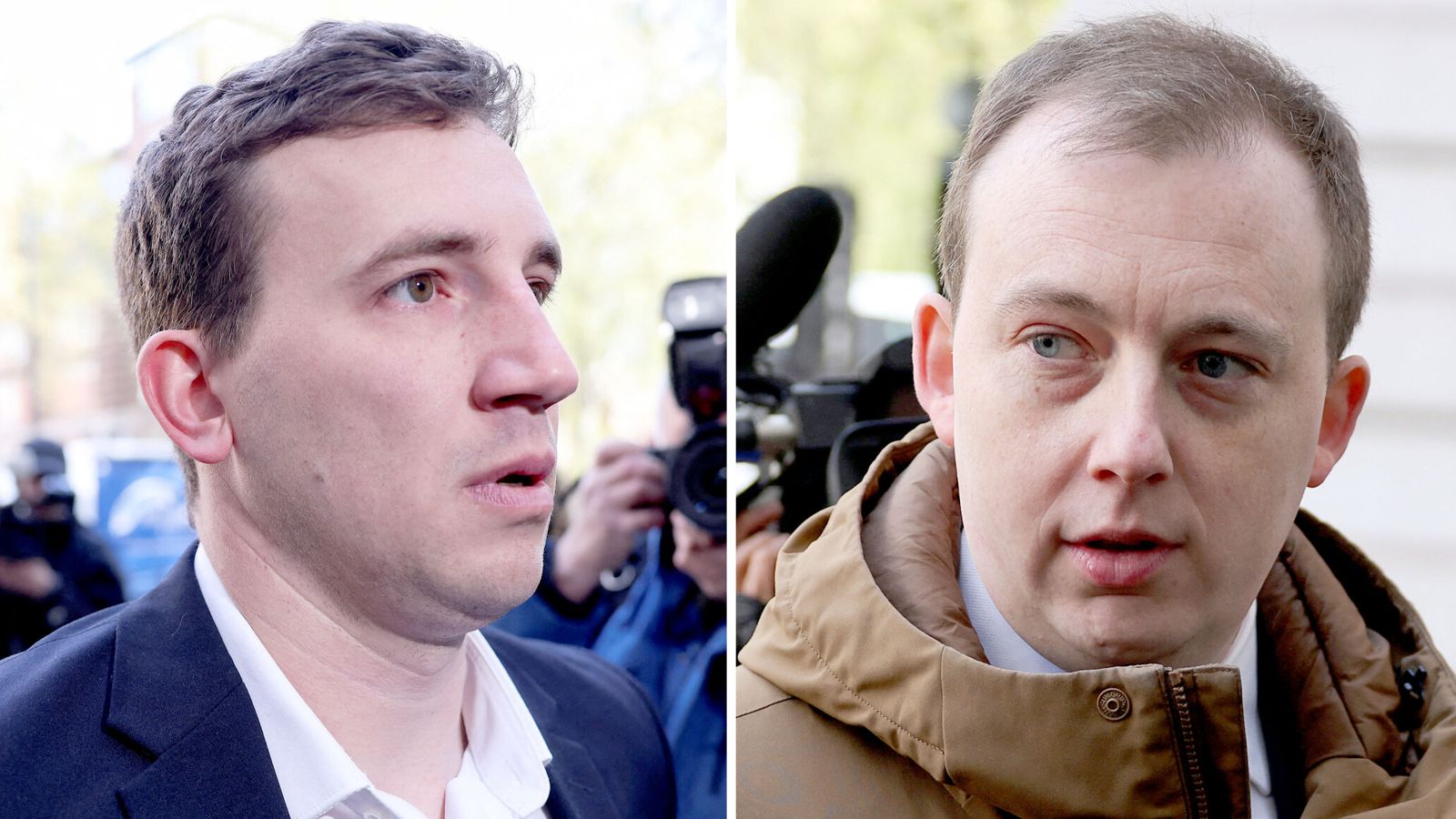
The chancellor has been sacked; the nuclear option for any PM.
Tory MPs including ministers tell me Liz Truss herself – prime minister for just five weeks – cannot survive and there is discussion about how to remove her.
Politics live: Reaction after Liz Truss gives news conference following chancellor’s sacking
But removing a sitting prime minister who doesn’t want to leave office isn’t always easy. Here are some of the options.
She could resign
No prime minister wants to be hounded out of Downing Street but it could be that Ms Truss, fuelled by cabinet resignations, sees the writing on the wall and announces a Conservative leadership contest.
This is what the last two prime ministers, Boris Johnson and Theresa May, ended up doing after both won no confidence votes of their MPs but their positions became untenable.
Both of them were in office for three years, though, not just a matter of weeks.
Vote of no confidence
Not so easy. The last Conservative leader to be ousted by their peers in parliament was Iain Duncan Smith in 2003.
Like Ms Truss, he was the choice of the party members, but not his MP colleagues (who favoured Ken Clarke); like Ms Truss he was also accused of making things worse by not reaching out across the party when appointing his shadow cabinet; and he struggled to maintain authority.
But – thanks to a little-known rule of the backbench 1922 Committee – this is not currently an option.
When Mr Johnson became prime minister in the summer of 2019, the powerful committee decided that a new leader would get a “grace period” of a year before they could be challenged.
This is an unwritten rule and could of course be changed if enough letters come in to trigger a vote or if there is clamour internally.
Some letters have gone in already, I’m told by MPs.
As one source on the 1922 Committee put it to me, committee chairman Sir Graham Brady “would have to act if we found ourselves in that situation”.
A coronation
The problem is that many Conservative MPs feel it was the membership who chose Ms Truss – based on an unachievable prospectus – and they would rather not allow them to choose her successor.
This is much trickier, as the principle that the leader is “elected by the membership” is enshrined in Schedule 2 of the Conservative Party’s written constitution and overturning that would require a two-thirds majority in a vote of the National Conservative Convention, which has 800 members comprising the party’s senior officials including grassroots association chairs.
There is no guarantee of how that might go, and there would be accusations that it was shutting down party democracy.
Click to subscribe to the Sky News Daily wherever you get your podcasts
Just one contender
One option would be for MPs to shortlist two candidates in a leadership contest, and for one of them to drop out – as Andrea Leadsom did in her contest with Mrs May in 2016.
The last candidate standing would become leader “by acclamation” and that could happen quite quickly.
Or, as ConservativeHome’s Paul Goodman has suggested, MPs could set a higher bar of say 100 MPs supporting each candidate so there is only one possible winner.
But it’s not clear there is a unifying figure to undertake that role.
Read more:
Kwasi Kwarteng’s full resignation letter to Liz Truss – and her reply
Treasury chief secretary Philp moved aside and replaced
Rishi Sunak supporters believe he has been vindicated for predicting market turmoil, but it’s far from clear he would be accepted more widely.
An election
Ms Truss could make the extremely bold decision, given her party is now 30 points behind in the polls, to go for an election.
The Fixed Term Parliaments Act has been repealed so she would not need a vote in parliament to do this – to which you would imagine only Conservatives would be opposed.
Then the voters would decide her fate.














